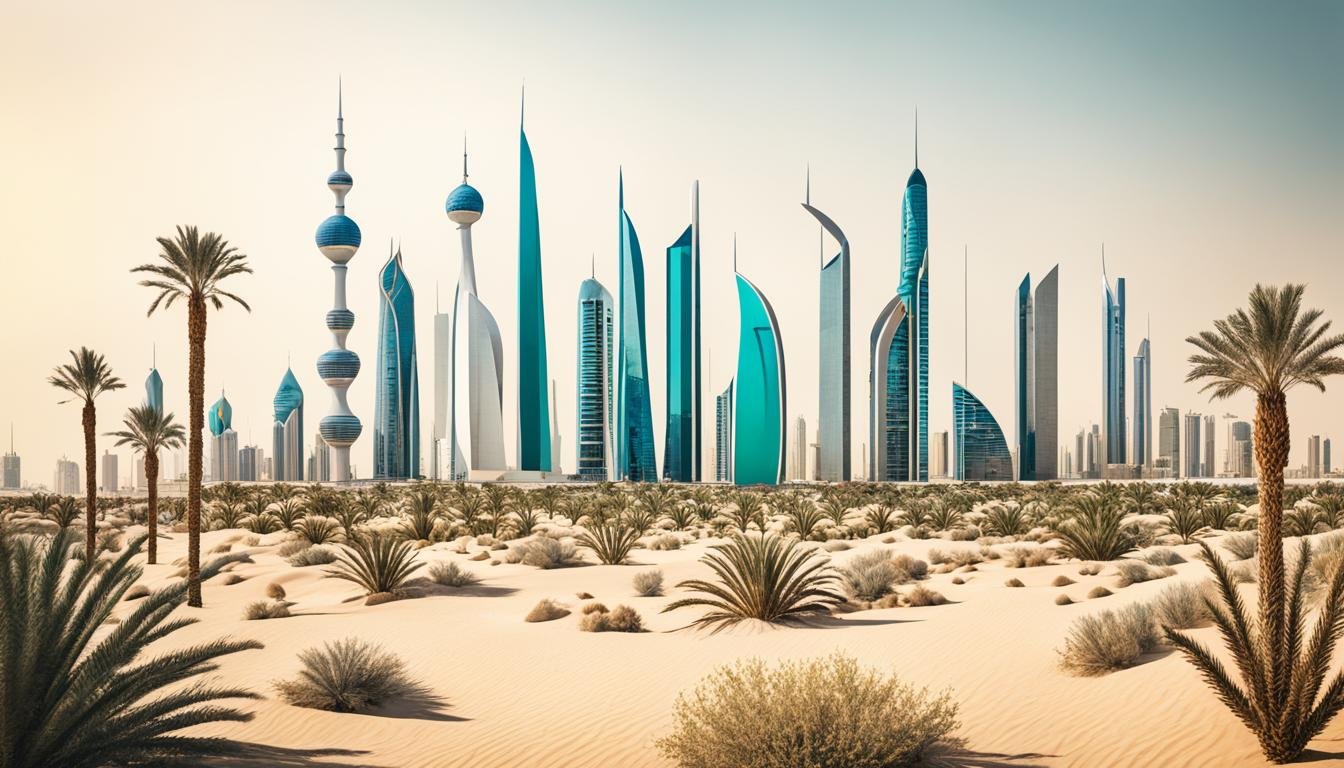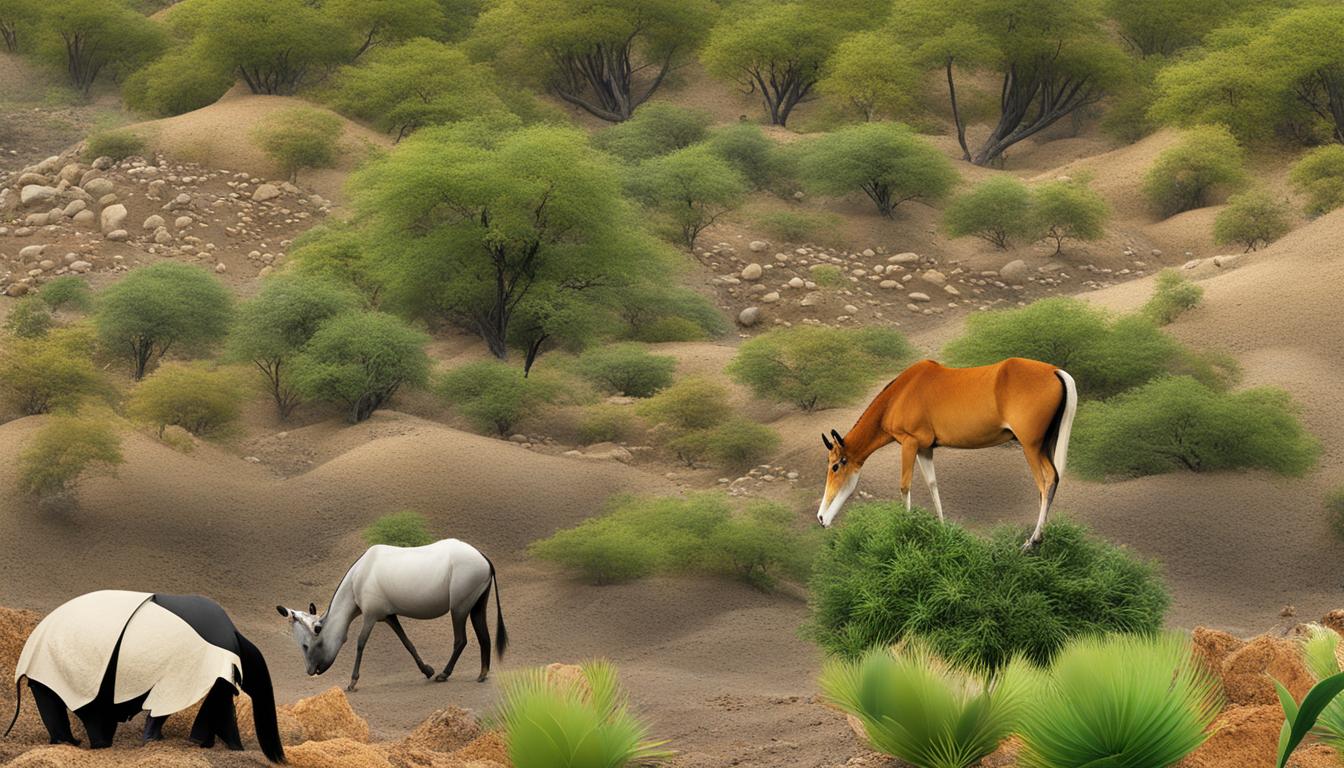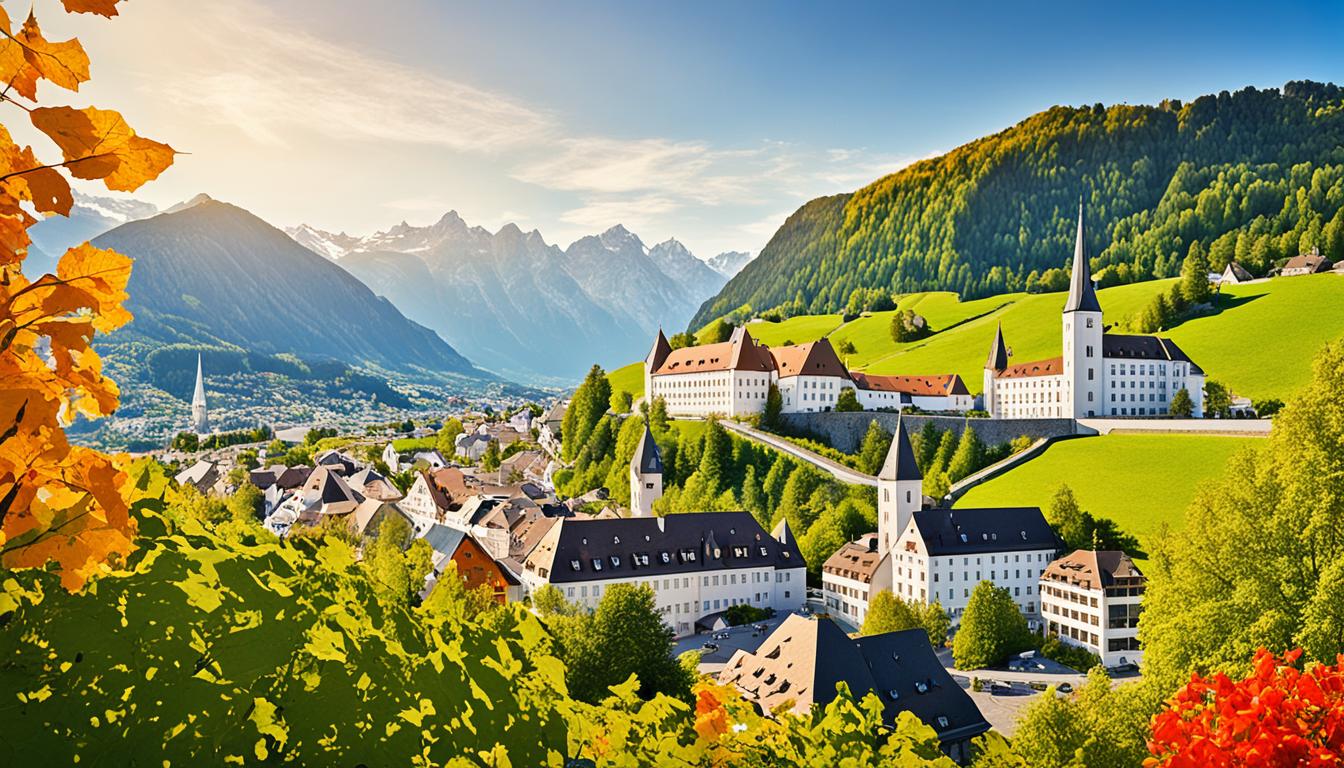Lebanon Biodiversity and the Built Environment
Did you know that Lebanon, despite its small size, boasts an astonishing level of biodiversity within its urban areas? The relationship between Lebanon’s biodiversity and the built environment is a crucial factor in promoting sustainable development and implementing green infrastructure. In this article, we will explore the importance of preserving biodiversity in urban areas and the role of eco-friendly architecture and urban planning in supporting ecological sustainability.
Key Takeaways
- Lebanon’s urban areas are home to a remarkable diversity of plant and animal species, making biodiversity conservation in the built environment a pressing concern.
- Preserving Lebanon’s biodiversity is essential for promoting sustainable urban development and ensuring a greener future.
- Eco-friendly architecture and sustainable urban planning practices play a vital role in enhancing urban biodiversity and supporting ecological sustainability.
- The legal framework in Lebanon, including environmental regulations and international conventions, helps protect the country’s biodiversity.
- By mainstreaming biodiversity considerations in environmental impact assessments and implementing restoration projects, Lebanon can mitigate the negative impacts of development on its natural heritage.
Understanding Biodiversity and Its Threats
Biodiversity refers to the variety of plant and animal species present in a particular ecosystem. Lebanon is renowned for its rich biodiversity, which encompasses unique flora and fauna. However, this biodiversity faces numerous threats, including habitat destruction and climate change, that place it at risk. To safeguard Lebanon’s natural heritage, it is crucial to identify and conserve areas of high biodiversity value, known as important biodiversity areas.
These important biodiversity areas serve as hotspots for species diversity and conservation efforts. By protecting these areas, Lebanon can preserve its unique ecosystems and prevent the loss of valuable plant and animal species. Conserving biodiversity contributes to maintaining ecological balance and supporting the overall health of the environment.
To gain a better understanding of the importance of conserving biodiversity and the threats it faces, let’s explore some key points:
- Habitat Destruction: The destruction and fragmentation of natural habitats due to urbanization, deforestation, and infrastructure development pose a significant threat to biodiversity. These activities result in the loss of crucial habitats for various species, leading to a decline in population numbers and potential extinction.
- Climate Change: The changing climate affects biodiversity by altering habitats, disrupting ecological processes, and impacting species’ survival. Rising temperatures, changing rainfall patterns, and extreme weather events pose challenges for species’ ability to adapt and thrive.
- Invasive Species: The introduction of non-native species into an ecosystem can have detrimental effects on native species and their habitats. Invasive species often outcompete local flora and fauna for resources, leading to a loss of biodiversity and ecosystem instability.
“Preserving biodiversity is essential for maintaining ecological balance and ensuring the sustainability of our ecosystems.” – Dr. Sarah Johnson, Biodiversity Conservation Specialist
It is vital for Lebanon to prioritize biodiversity conservation efforts and implement measures to mitigate the threats posed to its unique ecosystems. By raising awareness, promoting sustainable practices, and establishing protected areas, Lebanon can ensure the long-term preservation of its rich biodiversity for future generations.
Key Takeaways:
– Biodiversity encompasses the variety of plant and animal species in an ecosystem.
– Lebanon is known for its diverse flora and fauna.
– Threats to biodiversity include habitat destruction, climate change, and invasive species.
– Important biodiversity areas serve as hotspots for species diversity and conservation efforts.
– Conservation measures are crucial to safeguard Lebanon’s natural heritage and ensure ecological sustainability.
The Role of the Legal Framework in Biodiversity Conservation
Lebanon has a robust legal framework in place to protect its rich biodiversity. The country has implemented various regulations and standards for environmental protection, ensuring the preservation of its natural heritage. Additionally, Lebanon actively participates in international conventions on biodiversity, such as the Convention on Biological Diversity, further emphasizing its commitment to global environmental conservation.
By adhering to Lebanese regulations for environmental protection and international conventions on biodiversity, Lebanon takes significant steps towards safeguarding its unique ecosystems and promoting sustainable development. These legal measures play a crucial role in both preserving biodiversity and ensuring the well-being of future generations.
“The legal framework in Lebanon provides a strong foundation for biodiversity conservation, enabling the country to address environmental challenges effectively.” – Ministry of Environment, Lebanon
Lebanese Regulations for Environmental Protection
The Lebanese Ministry of Environment has established comprehensive regulations and standards to protect the country’s biodiversity. These regulations encompass diverse aspects of environmental conservation, including habitat preservation, species protection, and mitigating pollution. By enforcing these regulations, Lebanon aims to maintain a healthy and balanced ecosystem.
International Conventions on Biodiversity
Lebanon is an active participant in international conventions on biodiversity, aligning its efforts with the global community’s objectives. The country’s commitment to the Convention on Biological Diversity demonstrates its dedication to conserving biodiversity on a global scale. Through these international collaborations, Lebanon can contribute to the collective efforts aimed at safeguarding the planet’s natural resources and promoting sustainable practices worldwide.
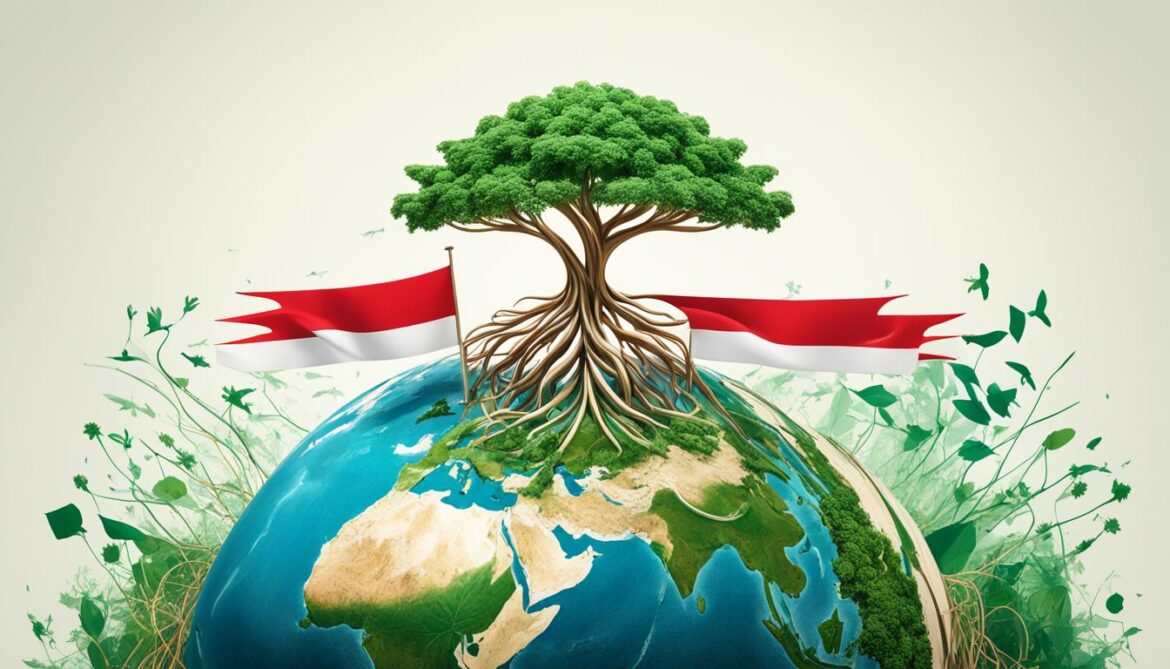
The implementation of Lebanese regulations for environmental protection and adherence to international conventions on biodiversity create a solid foundation for biodiversity conservation in Lebanon. By integrating legal measures with effective enforcement and monitoring, Lebanon can ensure the preservation of its diverse ecosystems and promote a sustainable future for all.
Mainstreaming Biodiversity Conservation in Environmental Impact Assessment
Environmental impact assessments (EIAs) are crucial in evaluating the potential environmental and biodiversity impacts of development projects. In Lebanon, conducting EIAs is guided by specific guidelines that prioritize biodiversity conservation. These guidelines emphasize the inclusion of biodiversity considerations in the screening and scoping phases of the EIA process. By mainstreaming biodiversity in EIAs, Lebanon aims to minimize the negative impacts of development projects on its precious biodiversity.
Screening and Scoping Phases: Incorporating Biodiversity
The screening and scoping phases of the EIA process play a vital role in identifying and assessing potential impacts on biodiversity. During the screening phase, projects are evaluated to determine if they have any significant impacts on the environment, including biodiversity. This phase helps in determining whether a full EIA is required.
The scoping phase follows the screening phase and involves defining the scope and boundaries of the EIA. During scoping, the focus is on identifying and assessing potential biodiversity impacts and proposing measures to mitigate these impacts. This phase enables the integration of biodiversity considerations into the overall EIA process.
“By incorporating biodiversity considerations in the screening and scoping phases of the EIA process, Lebanon ensures that development projects are carefully assessed for their potential impacts on biodiversity. This approach allows for the development of appropriate mitigation measures, promoting sustainable development while safeguarding Lebanon’s precious ecosystems and species.”
EIA Guidelines for Biodiversity Conservation in Lebanon
Lebanon has established specific guidelines to ensure that EIAs adequately address biodiversity conservation. These guidelines aim to:
- Promote the assessment of direct and indirect impacts on biodiversity
- Encourage the identification and evaluation of biodiversity values within and around the project site
- Facilitate the design and implementation of appropriate mitigation and enhancement measures for biodiversity
- Ensure stakeholder participation and engagement in biodiversity conservation
By providing clear instructions and criteria for assessing and addressing biodiversity impacts, these guidelines assist developers, environmental consultants, and relevant authorities in conducting comprehensive EIAs that effectively consider and protect Lebanon’s biodiversity.
Benefits of Mainstreaming Biodiversity in EIAs
Mainstreaming biodiversity in EIAs offers several benefits:
- Enhanced understanding of potential impacts on biodiversity
- Identification of suitable mitigation measures for protecting biodiversity
- Promotion of sustainable development practices
- Improved integration of biodiversity conservation into development planning
This approach ensures that the negative impacts on biodiversity are minimized and that development projects are designed and implemented in a manner that aligns with Lebanon’s environmental sustainability goals.
Example Case Study: Environmental Impact Assessment for a New Residential Complex
To illustrate the importance of biodiversity-inclusive EIAs, consider the case of an environmental impact assessment conducted for a new residential complex in Lebanon. The project aims to construct a housing development in an ecologically sensitive area.
| Phase | Key Considerations |
|---|---|
| Screening | Determine the potential impacts on the surrounding biodiversity due to habitat fragmentation and loss |
| Scoping | Identify measures to preserve and enhance the existing biodiversity, such as the creation of wildlife corridors, planting native vegetation, and implementing sustainable drainage systems |
| Assessment | Conduct detailed studies to assess the potential impacts on flora and fauna, including endangered species |
| Mitigation | Develop and implement measures to minimize the negative impacts on biodiversity, such as designing green roofs, incorporating bird-friendly features, and implementing strict landscaping guidelines |
| Monitoring and Management | Establish long-term monitoring programs to ensure the effectiveness of mitigation measures and the overall conservation of biodiversity in the area |
This example highlights the importance of systematically integrating biodiversity considerations throughout the EIA process. Through comprehensive assessments and effective mitigation measures, Lebanon can ensure that the development project balances the needs of the community with the preservation of biodiversity.
Enhancing Biodiversity in the Built Environment
The built environment, including urban areas, has the potential to play a crucial role in supporting biodiversity conservation. Urban biodiversity refers to the diverse range of plant and animal species that exist within cities and other urbanized areas. By implementing eco-friendly architecture, creating green spaces, and practicing sustainable urban planning, Lebanon can enhance urban biodiversity and promote ecological sustainability.
Eco-friendly architecture incorporates design elements and practices that minimize the negative impact on the environment and support biodiversity. This can include the use of sustainable materials, energy-efficient construction techniques, and the incorporation of green infrastructure, such as green roofs and vertical gardens.
Green spaces, such as parks, urban forests, and gardens, provide essential habitats for a variety of species and contribute to the overall ecological balance. These spaces can be designed to include native plant species, providing food and shelter for wildlife while also enhancing the aesthetic appeal of urban areas.
Sustainable urban planning practices involve considering the ecological aspects of urban development and incorporating measures to protect and enhance biodiversity. This includes preserving existing natural habitats, creating wildlife corridors to connect fragmented habitats, and integrating nature-based solutions into urban design.
To further illustrate the importance of enhancing biodiversity in the built environment, here is a relevant quote:
“Urban biodiversity is crucial for maintaining ecological balance in cities. By creating green spaces and wildlife-friendly habitats, we can support a healthier and more sustainable urban ecosystem.” – Dr. Sarah Reynolds, Ecologist.
Efforts to enhance urban biodiversity in Lebanon can include:
- Creating green roofs on buildings, providing additional habitat for plants and insects.
- Designing vertical gardens on walls, maximizing limited urban space for plant growth.
- Establishing wildlife-friendly habitats, such as birdhouses and bat boxes, to attract and support urban wildlife.
To emphasize the importance of enhancing urban biodiversity, a visual representation can be seen below:
| Benefits of Enhancing Urban Biodiversity | Ways to Enhance Urban Biodiversity |
|---|---|
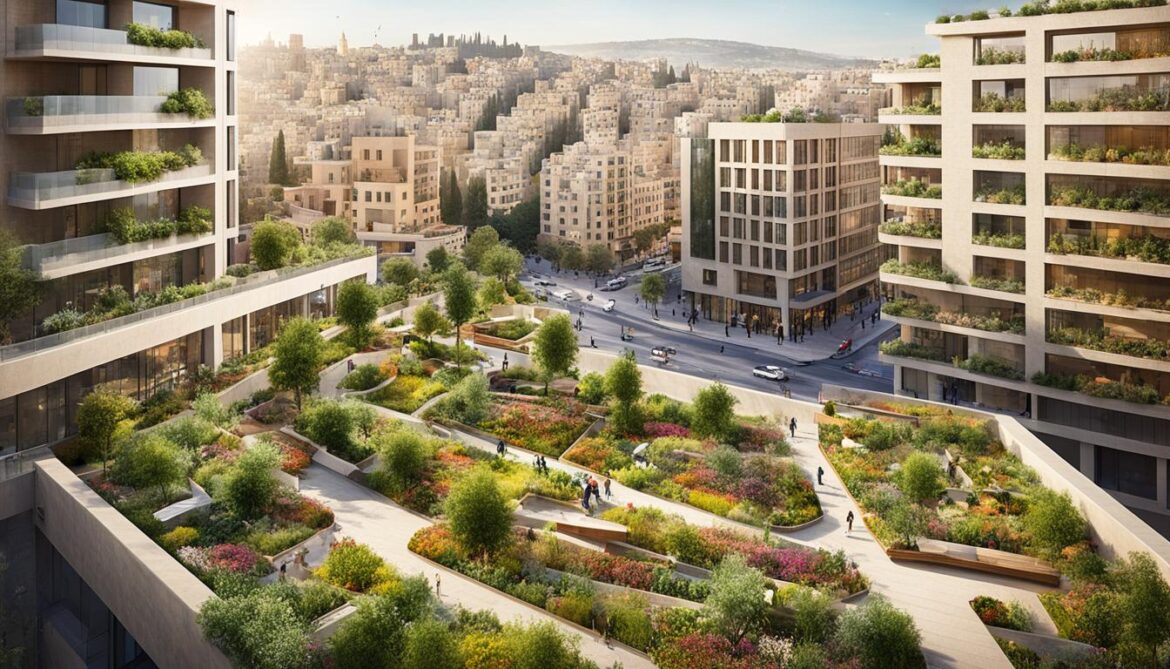 |
|
By implementing these strategies and promoting ecological sustainability in the built environment, Lebanon can create healthier, more resilient cities that support thriving biodiversity alongside urban development.
Case Study: Shade for Life – Restoring Ecosystems in the Beqaa Valley
The Beqaa Valley, renowned for its fertility, has encountered numerous challenges contributing to ecological degradation. These challenges include over-grazing, soil erosion, and deforestation. To address these issues and restore the ecosystems in the Beqaa Valley, a collaborative project called Shade for Life has been initiated.
The Shade for Life project is a partnership between the United Nations Environment Programme (UNEP) and the Lebanon Reforestation Initiative. Its primary objective is to engage in ecological restoration efforts within the Beqaa Valley. By implementing a range of interventions, such as tree planting with native species and the adoption of sustainable grazing practices, the project aims to enhance landscapes, safeguard biodiversity, and support the livelihoods of local shepherds.
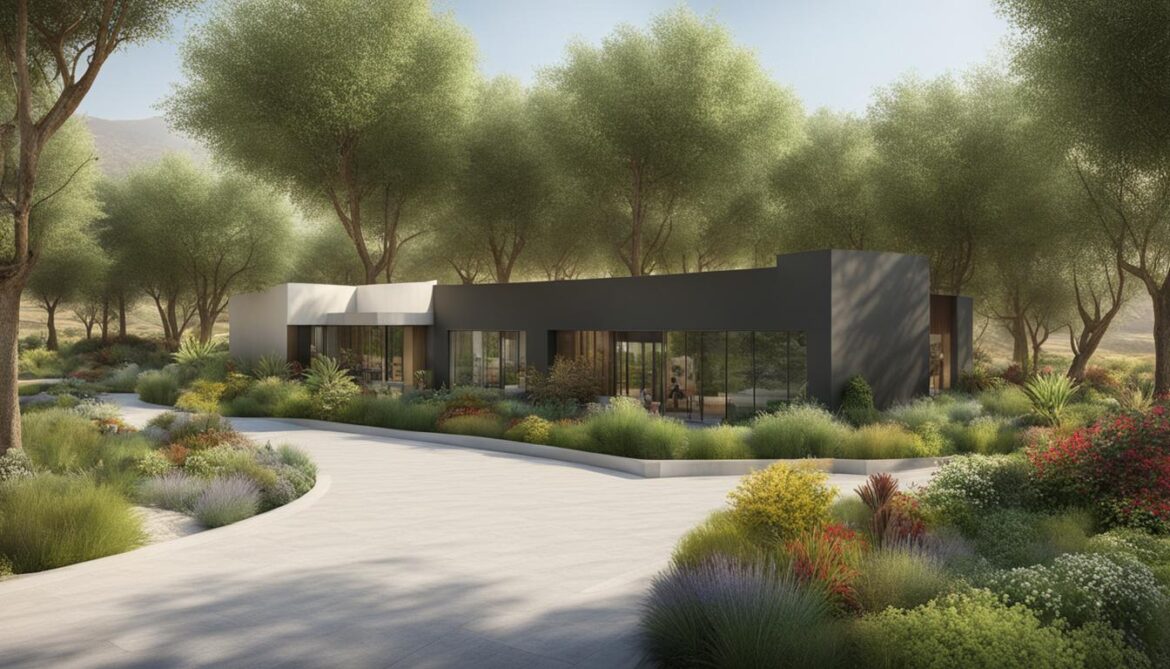
The restoration activities under the Shade for Life project play a vital role in mitigating the environmental impacts caused by over-grazing, soil erosion, and deforestation. By planting trees, the project not only helps in stabilizing the soil and reducing erosion but also provides habitats for various plant and animal species. The native tree species selected for planting contribute to the habitat restoration and support the overall biodiversity of the region.
In addition to tree planting, the Shade for Life project promotes sustainable grazing practices among local shepherds. By implementing rotational grazing methods, the project aims to prevent the overuse of vegetation and ensure the regeneration of plant species. This approach not only helps conserve the ecosystems but also supports the sustainable management of natural resources, preserving the delicate balance between humans and nature.
To monitor the progress and effectiveness of the restoration efforts, ongoing assessments are conducted by environmental experts. These assessments focus on factors such as vegetation growth, wildlife conservation, and the socio-economic impact on the local community. By regularly evaluating the outcomes, the Shade for Life project can adapt and refine its strategies, ensuring the best possible outcomes for the Beqaa Valley’s ecosystems and the people who depend on them.
“The Shade for Life project illustrates the significance of collaborative initiatives in restoring degraded ecosystems and promoting ecological sustainability,” says Dr. Maria Jones, an environmental scientist specializing in ecosystem restoration.
| Benefits of the Shade for Life Project | Key Outcomes |
|---|---|
| 1. Ecological Restoration | – Increased vegetation cover – Habitat restoration – Enhanced biodiversity |
| 2. Sustainable Grazing Practices | – Regeneration of plant species – Prevention of overgrazing – Support for local shepherds’ livelihoods |
| 3. Socio-Economic Impact | – Improved local economy through ecotourism – Enhanced resilience against climate change – Preservation of cultural heritage |
The Shade for Life project serves as a model for future ecological restoration initiatives, demonstrating the potential of collaborative efforts in addressing ecological degradation and supporting sustainable development. By investing in ecosystem restoration, Lebanon can create a resilient and biodiverse future for the Beqaa Valley, benefiting both the environment and local communities.
The Role of Livestock Grazing in Biodiversity Conservation
Livestock grazing has a significant impact on biodiversity, with both positive and negative effects. It is essential to understand and implement sustainable grazing practices to minimize biodiversity loss and protect our natural resources. One such practice is rotational grazing, which involves moving livestock between different areas to prevent overgrazing and promote land regeneration.
Rotational grazing helps preserve biodiversity by:
- Preventing land degradation: Overgrazing can lead to soil erosion, nutrient depletion, and habitat destruction. By rotating livestock to different pastures, it allows vegetation to recover, minimizing the risk of land degradation and maintaining a healthy ecosystem.
- Promoting species diversity: Grazing animals can affect plant composition and distribution. By implementing rotational grazing, a diverse range of plant species can thrive as different areas are given time to regenerate. This, in turn, supports a variety of animal species that depend on specific plants for food and shelter.
“Implementing sustainable grazing practices, such as rotational grazing, can help prevent land degradation and promote biodiversity conservation.” – Anonymous expert
In Lebanon, managing grazing patterns and restoring degraded rangelands are crucial steps towards mitigating the negative impacts of livestock grazing on biodiversity. By working with farmers and providing support for sustainable grazing practices, we can ensure the long-term health and resilience of our ecosystems.

The Benefits of Rotational Grazing
| Benefits | Description |
|---|---|
| Improved soil health | Rotational grazing allows for better soil aeration, nutrient cycling, and water infiltration, resulting in healthier soil and improved plant growth. |
| Enhanced productivity | By giving pastures time to rest and recover, rotational grazing can lead to increased forage production and livestock weight gain. |
| Reduced parasite load | Rotating livestock between pastures can help break the parasite life cycle, reducing the need for chemical dewormers and promoting animal health. |
| Support for wildlife | Creating grazing patterns that accommodate wildlife corridors can provide habitat and food sources for various animal species. |
By adopting sustainable grazing practices like rotational grazing, Lebanon can strike a balance between supporting livestock production and safeguarding biodiversity. The careful management of grazing systems is essential for the long-term preservation of our natural resources and the promotion of ecological sustainability.
The Global Perspective on Ecosystem Restoration
The international community recognizes the importance of ecosystem restoration for addressing the global nature crisis. Efforts to restore and conserve ecosystems are crucial in protecting biodiversity, mitigating climate change, and promoting sustainable development around the world.
One notable initiative in this regard is the UN Decade on Ecosystem Restoration. Led by the United Nations Environment Programme (UNEP) and the Food and Agriculture Organization of the United Nations (FAO), this decade-long effort aims to halt the degradation of ecosystems and enhance people’s livelihoods. It serves as a global call to action, bringing together governments, organizations, communities, and individuals to work towards restoring and revitalizing degraded ecosystems.
The global biodiversity framework is another significant aspect of ecosystem restoration. This framework sets targets and guidelines to protect and restore biodiversity on a global scale. It emphasizes the use of nature-based solutions to adapt to climate change, mitigate its impact, and safeguard biodiversity.
“Ecosystem restoration is fundamental to the achievement of the Sustainable Development Goals and the protection of biodiversity. It offers a holistic approach that combines environmental, economic, and social dimensions for a more sustainable future.” – United Nations Environment Programme (UNEP)
Ecosystem restoration involves various approaches, including reforestation, habitat restoration, and sustainable land management practices. By restoring ecosystems, we can enhance their capacity to provide essential services such as clean air and water, carbon sequestration, and habitat for diverse species.
It is important for countries to integrate ecosystem restoration into their development plans and policies. By doing so, they can contribute to global efforts to conserve biodiversity, combat climate change, and promote sustainable development. Collaboration between governments, organizations, and local communities is vital in achieving the goals of the UN Decade on Ecosystem Restoration and the global biodiversity framework.
The Benefits of Ecosystem Restoration
Ecosystem restoration offers numerous benefits, both ecological and socio-economic. Here are some key advantages:
- Biodiversity conservation: Ecosystem restoration helps protect and revive biodiversity, preserving habitats and allowing species to thrive.
- Climate change mitigation: Restored ecosystems can sequester carbon dioxide from the atmosphere, reducing greenhouse gas emissions and combating climate change.
- Water management: Healthy ecosystems play a vital role in regulating water cycles, improving water quality, and reducing the risks of floods and droughts.
- Enhanced food security: Restored ecosystems can support sustainable agriculture, promoting food production and reducing dependence on synthetic inputs.
- Job creation and livelihoods: Ecosystem restoration projects create employment opportunities and contribute to local economies, particularly in rural areas.
By prioritizing ecosystem restoration, governments, organizations, and individuals can work together to build a more sustainable and resilient future, where nature and human well-being can coexist harmoniously.
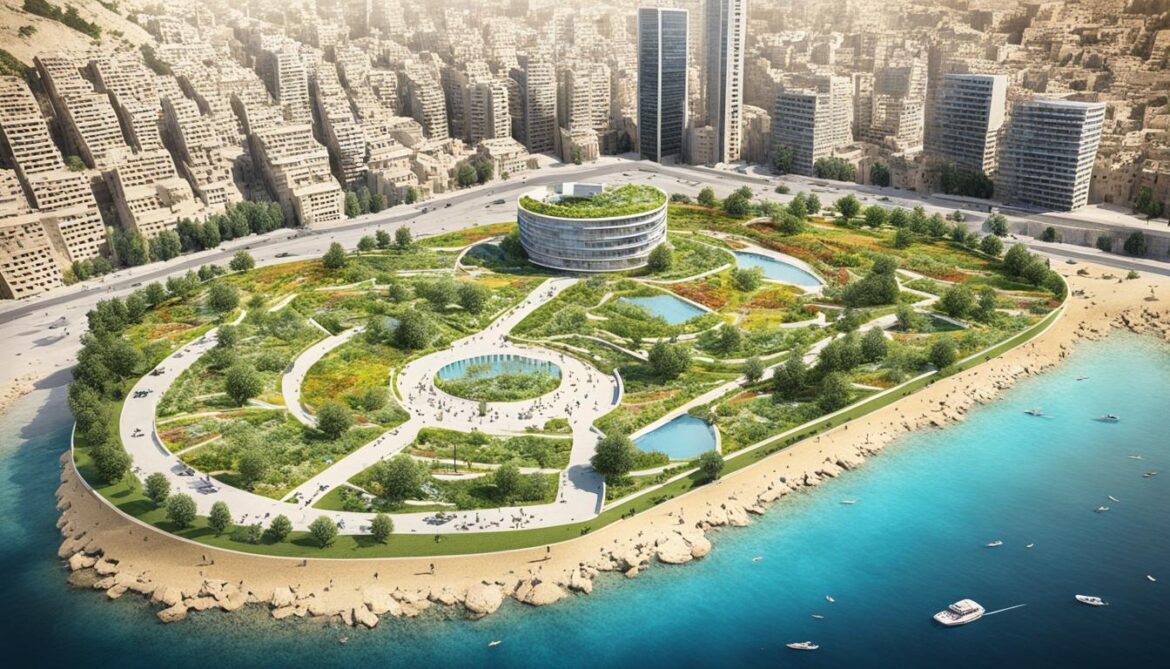
| Key Points | Examples |
|---|---|
| Ecosystem restoration is essential in addressing the global nature crisis. | Reforestation projects in the Amazon Rainforest. |
| The UN Decade on Ecosystem Restoration aims to halt ecosystem degradation and enhance livelihoods. | Restoration of degraded wetlands in South Africa. |
| The global biodiversity framework emphasizes nature-based solutions for climate change adaptation and biodiversity protection. | Conserving coral reefs through restoration and protection measures. |
| Ecosystem restoration offers biodiversity conservation, climate change mitigation, and socio-economic benefits. | Restoring mangrove forests to protect coastal communities from storms and provide habitat for marine species. |
Conclusion
Lebanon’s rich biodiversity and the sustainable development of its urban areas are inextricably linked. It is crucial to implement effective conservation measures and prioritize environmental conservation to ensure the preservation of this valuable natural heritage. By embracing sustainable urban development practices and mainstreaming biodiversity considerations in development projects, Lebanon can achieve a harmonious coexistence between nature and urbanization.
Restoring degraded ecosystems, such as the collaborative Shade for Life project in the Beqaa Valley, is vital for conserving biodiversity and supporting local communities. Additionally, emphasizing ecological sustainability in urban planning and architecture can create greener and more sustainable urban environments.
Lebanon’s commitment to environmental conservation and sustainable urban development is essential for a resilient and thriving future. By preserving biodiversity and promoting sustainable practices, Lebanon can create a model for ecological sustainability that benefits both its people and the planet.




